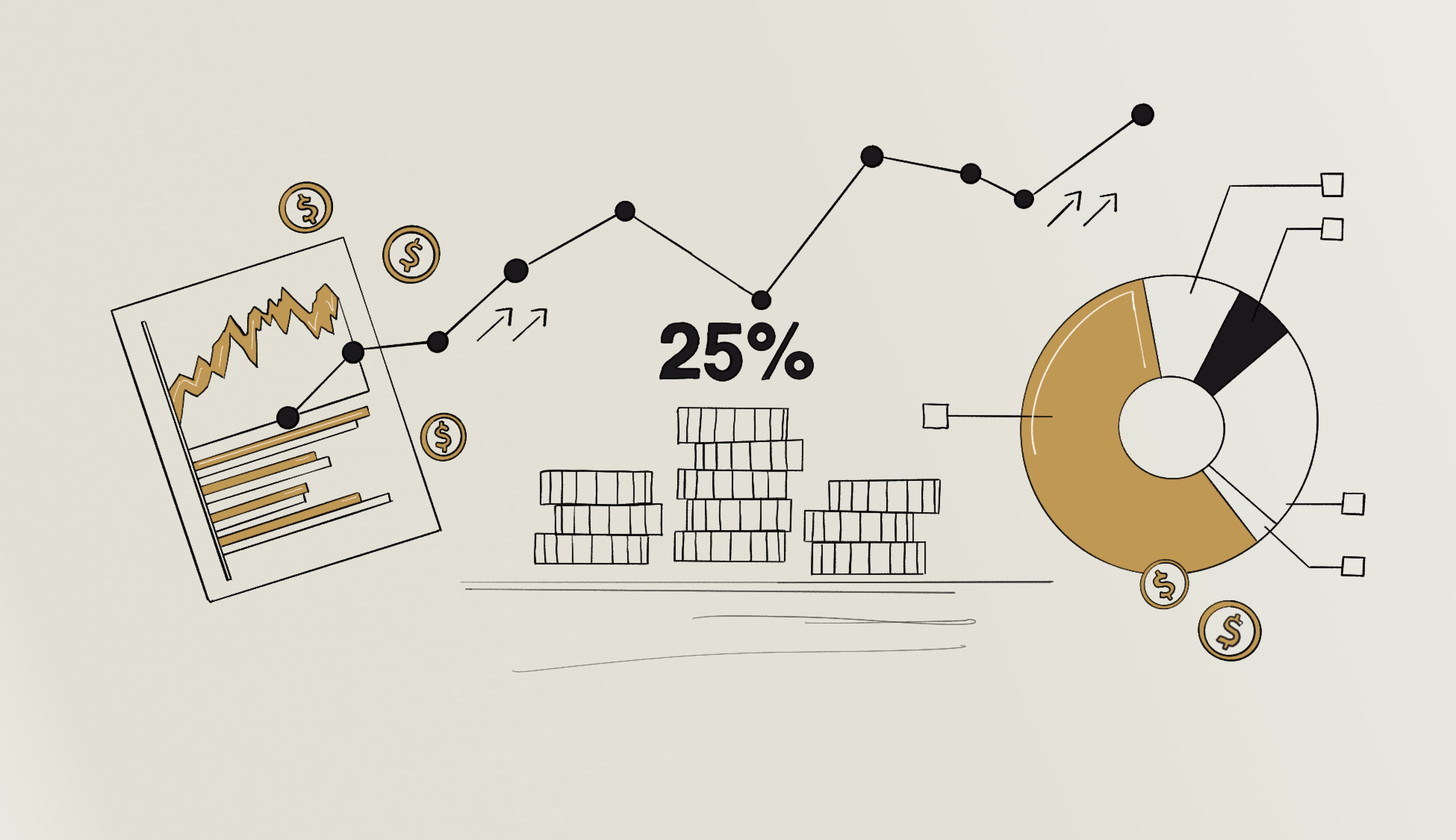Why did the National Bank keep the discount rate of 25%?
Share this post

In June 2022, the NBU increased the discount rate from 10% to 25% per annum. This was one of a set of measures to stabilize hryvnia fluctuations and preserve household savings. It really boosted the interest in hryvnia assets and reduced the pressure on the currency market, in particular on the gray market. Already now we see that inflation is somewhat lower than expected, although it will be around 30% year-on-year. In this blog, we will analyze why the National Bank has kept the rate at the same level and how it will affect the economy.
On December 8, the national regulator decided to keep the discount rate at the same level. Such a move will help maintain exchange rate stability, keep deposits in banks' accounts, and contribute to a gradual decline in inflation. According to NBU monitoring, so far the consumer price index continues to rise, but at a slower pace than previously predicted. The hostilities and the occupation of part of Ukraine's territory remain the biggest influencing factors. The increase in inflation is caused by the destruction of infrastructure and production facilities, as well as logistical constraints.
Thanks to such measures, it was possible to significantly reduce the gap between the official and cash hryvnia exchange rates, stabilize inflation expectations and protect the savings of citizens. The inflow of international financial aid should also be considered as a factor of gradual stabilization of the economic system. Along with maintaining a sufficiently high discount rate, it became an additional element of controlling inflation.
We can also recall that in 2015 the rate was even higher — 30%, and in 2000 it rose to 45%. Of course, a high discount rate is not favorable to economic growth and is the reason for limited lending. But it should be understood that the alternative would be a rapid burning of government reserves in a fire of inflation and a global currency crisis. Obviously, with positive trends, the regulator will lower the rate.
The NBU discount rate in 2022. Source: NBU
Raising the discount rate to slow inflation is not a new step. The crisis caused by Russia's war has also affected Western countries. To reach its inflation target of 2%, the EU central bank raised its discount rate by 0.75% for the first time in its history this fall. Not only the European Union reacted in this manner, but even the United States. The U.S. Federal Reserve raised its discount rate to 4%, the highest since the 2008 crisis. We can also expect that this is not the last rate increase in the near future.
The current discount rate has not become the only mechanism for slowing inflation — the state regulator has changed the terms of reserve requirements. Now banks will have to set aside money from customers, namely 5% for hryvnia accounts and 15% for foreign currency accounts. However, there is no need to save exactly from cash, half of the reserves can also be in the form of government bonds. These funds do not have to be accumulated. Banks will be able to make these assets work and receive interest from the Ministry of Finance, which in turn will reduce the volume of liquidity and create additional clients for the Ministry of Finance.
Obviously, the national regulator does not expect inflation to decrease quickly due to the continuation of the war. Constant rocket attacks and the resulting power shortages have a significant impact on economic activity, and the situation will not change anytime soon. Businesses have to spend additional resources to maintain operations during blackouts, so we get a reduction in production. Therefore, measures to control inflation are likely to be used in the future, with adjustments for the current situation.


